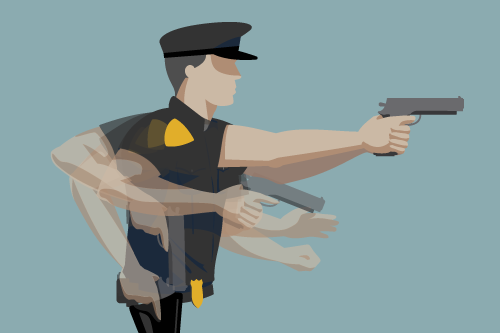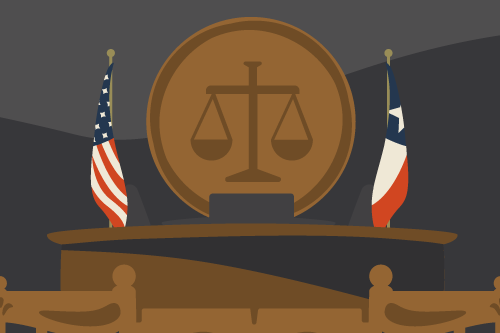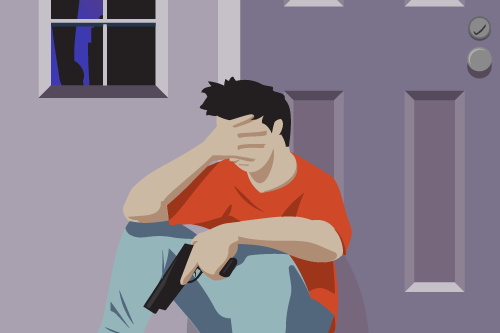Jimmy Cox was eating dinner with his wife at a Mexican restaurant in Midland when he heard gunshots coming from the kitchen.
As other diners ran for the door and huddled under tables, Cox stood and aimed his gun. The Midland police detective, off duty and wearing a pink shirt and khaki pants, shot at Nyocomus Garnett five times, killing him. Garnett had been trying to rob the place, asking employees in the kitchen for the safe and shooting into the ceiling.
 Midland PD Facebook
Midland PD Facebook“It’s something I never wanted to do,” Cox said of the 2014 shooting in a recent interview. “I hope I never have to do it again in my career, but I damn sure will because I’m going to go home at the end of the night.”
Police shootings that make national headlines typically involve on-duty, uniformed officers firing their guns during traffic stops, mental health calls, petty crimes or SWAT situations. It’s less common to hear of an officer eating with his family and switching to the role of law enforcer in an instant.
But in at least 66 cases — about 10 percent of police shootings in Texas’ largest cities between 2010 and 2015 — the officer pulling the trigger was off duty, according to an analysis of police data obtained by The Texas Tribune. Nineteen people were killed, and at least 22 others were injured after being shot by off-duty officers.
Some officers fired in self-defense, as any citizen might, after being mugged or confronting a burglar in their homes. In almost half of the shootings, the officers were working second jobs, generally in uniform and clearly acting in a law enforcement capacity providing security at places like apartment complexes, bars or superstores, according to the Tribune analysis.
Other times, officers were simply out in public — like Cox — when circumstances prompted them into a law enforcement role.
“You’re never off duty,” said Cox, who now works as a police officer at Midland Memorial Hospital. “You’re in a constant state of readiness. You’re always watching.”
Police say the investigations that typically follow police shootings are rigorous and that there's virtually no distinction between on-duty and off-duty incidents when internal investigators and grand juries scrutinize cases. Police critics who believe it's improper for departments to investigate their own officers are particularly troubled by off-duty incidents, they say, because officers may be granted more leniency than citizens in like circumstances.
Authority comes with the job
Even when off the clock, police are never just citizens; they always have the power to use force if they believe a situation calls for it.
So when off-duty Dallas Police Sgt. Jackie Moore shot and killed Codi Bullard in April 2014 after she happened upon Bullard stabbing someone, it was accepted that she was allowed to use her weapon in that situation. In fact, she won awards from her department and the city's police association for her actions.
“You still have the same authority,” explained Howard Williams, a former police chief in San Marcos and a criminal justice lecturer at Texas State University. “Just because you’re off duty doesn’t mean you’ve given up that authority.”
In 2012, another off-duty Dallas officer, in uniform and standing in line at a fast-food restaurant, saw a marijuana cigarette tucked behind the ear of a 19-year-old man, according to the city’s officer-involved shooting data. When the officer tried to talk to the man, he fled, fell and took out a gun; the officer shot and killed him. The officer was cleared of any wrongdoing.
Williams used a similar hypothetical to describe the difference between an officer and an ordinary citizen. If an officer tries by force to get a person to pick up a dropped cigarette butt and things escalate into a shooting, “the assumption is that they’re allowed to use force,” he said.
“If [an ordinary citizen does] that, it’s just plain illegal,” Williams said. “There is a different standard, and I’m sorry if people don’t like that, but it is true.”
In at least 30 of the 66 off-duty shootings reviewed by the Tribune, the officer involved was working security at a second job. Gunshots and fights in parking lots outside of bars or stores led to many of these incidents. On at least four occasions, officers shot an armed robbery suspect who entered the store where they were working.
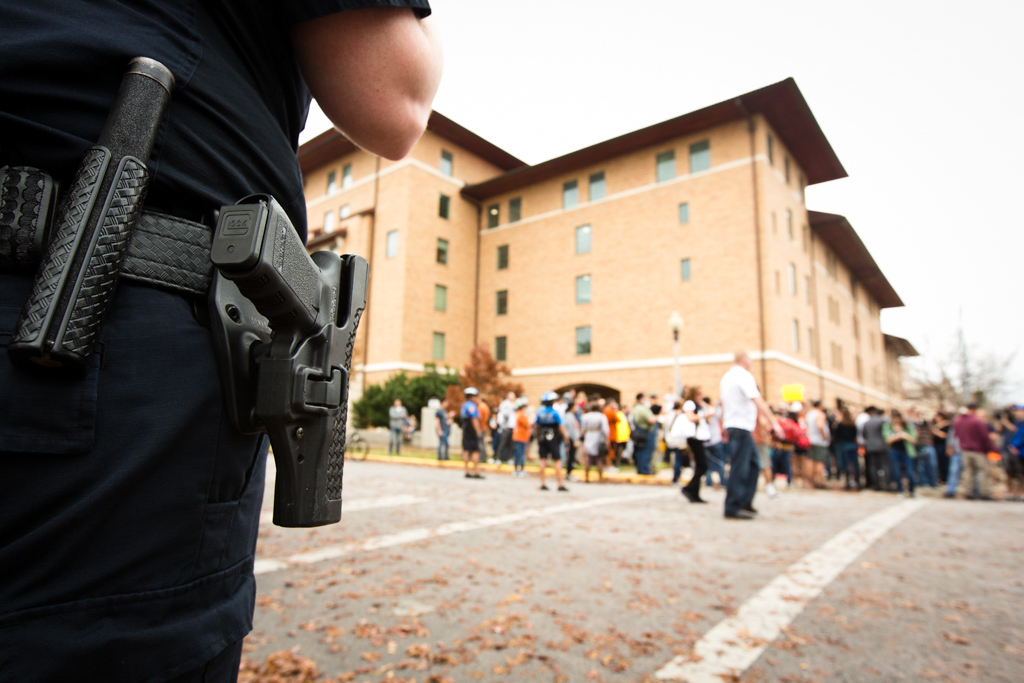 Callie Richmond
Callie RichmondIn March 2013, for instance, an off-duty Dallas officer working as a security guard in the parking lot of a nightclub shot and killed a man who was firing into a crowd. One other person was shot in the incident and survived. The department did not say whose bullet caused the injury.
A few months later, a Garland officer working security at Wal-Mart shot and killed a man who was suspected of shoplifting after he ran at the officer with a crowbar — one of the items he allegedly stole.
On the other end of the spectrum, eight officers fired while someone was breaking into their car or house. In Houston alone, three of the department’s off-duty shootings occurred after an intruder broke into an officer's home. In another three, the officer was mugged at gunpoint.
“A police officer, even off duty who is acting in a personal capacity, would still have the same self-defense rights ... as every other citizen,” said Kenneth Williams, a professor at Houston College of Law and an expert in criminal law.
Little distinction in investigations
Every police shooting triggers two investigations: an administrative inquiry to determine whether an officer violated departmental policies and a criminal investigation to weigh whether the shooting was lawful. In many cities, the agency that employs the shooting officer handles both investigations — a process that is often criticized.
“The overriding problem is the lack of accountability in these cases,” Kenneth Williams said, adding that he would recommend an independent, statewide unit to handle criminal investigations into police shootings. “Until there’s more accountability, there’s going to be people in the community real concerned about how these cases are handled.”
But officers from the same department are the ones able to easily arrive on the scene immediately after a shooting, said Charley Wilkison, executive director of the Combined Law Enforcement Associations of Texas.
“I don’t see that there’s probably anybody more hard on police officers than the officers, the chief and the internal affairs division of the department,” he added. “That’s their role.”
As with on-duty shootings, it is relatively rare for officers to face discipline or criminal charges following an off-duty shooting.
Since 2010, three officers were fired or indicted after an off-duty shooting, according to the data compiled by the Tribune.
In 2010, El Paso officer Jorge Gonzalez shot Andres Cortez, the driver of a car that had rear-ended him, according to court documents. The shooting followed an altercation after the accident, in which Gonzalez said Cortez hit his girlfriend with his car while attempting to flee the scene. Cortez had said he was trying to get his car out of moving traffic when Gonzalez’s wife began beating on the car. Gonzalez said he fired after Cortez’s vehicle pinned his wife against a wall.
The gunshot paralyzed Cortez from the neck down. He died more than five years later.
The department cleared Gonzalez of any wrongdoing administratively, but he was indicted in July 2011 on two counts of aggravated assault. His trial has been repeatedly delayed. He continued to work at the department after his indictment until he was fired in 2014 in an unrelated case for rule violations, according to Jim Darnell, Gonzalez’s attorney.
In two cases, officers faced criminal charges for their actions related to a shooting, though not for actually pulling the trigger.
In 2011, Dallas police Sgt. Stormy Magiera shot at a man she said was attempting to rob her at knifepoint, but she missed. An investigation revealed there had been no robbery, and Magiera was trying to illegally purchase hydrocodone at the time of the shooting, according to a Facebook post from the Dallas Police Department.
She was fired from the department and pleaded guilty to obtaining the drug by misrepresentation, but she was not charged for the shooting. She was sentenced to two years of probation in 2014 for the drug charge, according to Dallas County records.
And in 2013, Laredo Officer Frank Carter was sentenced to one year in federal prison for violating the civil rights of an arrestee while off duty. Carter was working security at a McDonald's and approached a car that had pulled up to the closed restaurant, according to the department’s investigative summary. Surveillance video showed that when he walked around to the driver's side, the car took off. Carter ran alongside it before shooting at the vehicle as it drove away.
Carter wasn’t charged for pulling the trigger. Instead, he pleaded guilty and resigned from the department after it was found that he repeatedly punched and yelled at the car's driver when he was later handcuffed in the backseat of another officer’s car.
Never fully private citizens
In 11 cases identified by the Tribune, officers shot at people in situations similar to what any private citizen might face — fighting off a mugger or reacting to a burglar at their home. Even in those cases, though, the initial investigative process for officers differs from that for civilians.
No matter if the officer seems to be acting outside of a police capacity in a shooting, typically, a police association attorney arrives shortly after the incident to represent the officer, and the officer's own department is on scene investigating.
Experts disagree on how big a role the officer's badge plays from the start. Howard Williams, the former police chief, said in a clear-cut self defense case, no citizen or officer would be arrested on the scene. Kenneth Williams, the Houston College of Law professor, said officers are given the upper hand.
"[Citizens] are much more likely to be arrested immediately after the shooting than a police officer [in self-defense cases],” he said. "It almost never happens with a police officer when there’s any type of plausible self-defense claim."
Self defense was the explanation Arlington police Sgt. Thedrick Andres gave. He shot and killed Juan May, a 45-year-old ship captain and U.S. Marine Corps veteran, after a summer night of partying in 2014 ended with hot words, a fight and a single gunshot.
 Credit: Jindia Blount
Credit: Jindia BlountMay and Andres had been among a group celebrating May’s cousin’s birthday, hopping from club to club in a rented party bus. The two men had never met before.
After the party bus returned to the meetup point at a Pappadeaux restaurant in Duncanville, Andres approached May, said Jindia Blount, May’s younger sister, in a recent interview with the Tribune.
She said Andres was upset about a comment made earlier in the night. Other witnesses reported that May approached Andres, according to the grand jury referral report by the Dallas County Sheriff’s office, which investigated the shooting. By all accounts, the two men exchanged words, May threw a punch, and a fight broke out.
Blount and other witnesses said the fight stopped, May walked away, and Andres ran to his car. Shouts about a gun prompted May to chase after Andres to keep him from getting to the weapon.
Andres and others said May and his cousin attacked Andres, and when they were pulled off, Andres ran to his car to escape. When May chased after him, Andres pulled out the gun he kept in his car and told May he was a police officer. The gun “went off” when May grabbed the gun while threatening him, Andres told responding officers.
May was shot once in the chest.
It would be several minutes — as Blount was sitting on the ground feeling her brother’s blood rush through her fingers — before she’d realize that it was a police officer who shot her brother.
Duncanville police arrived and called the Dallas County Sheriff’s Office, which took over the criminal investigation. The lead detective on the case, Billy Fetter, said it was handled as any other shooting.
Arlington police arrived shortly after to conduct an internal investigation, and an attorney working for the Texas Municipal Police Association was soon on the scene at Andres’ side. About a mile away, Blount sat in a hospital listening to a doctor say her brother was dead.
“I was numb at that point,” she said. “It had not sunk in.”
Nearly three hours after the shooting — at around 3:20 a.m. on a Sunday — a detective who learned that alcohol may have been involved approached Andres’ lawyer to request a blood sample to test his alcohol levels, according to the report. His lawyer declined and said he would need a search warrant.
The warrant was signed by a judge more than four hours later, and Andres’ blood was obtained at 8:52 a.m. — more than eight hours after the shooting. That test showed no alcohol in his system.
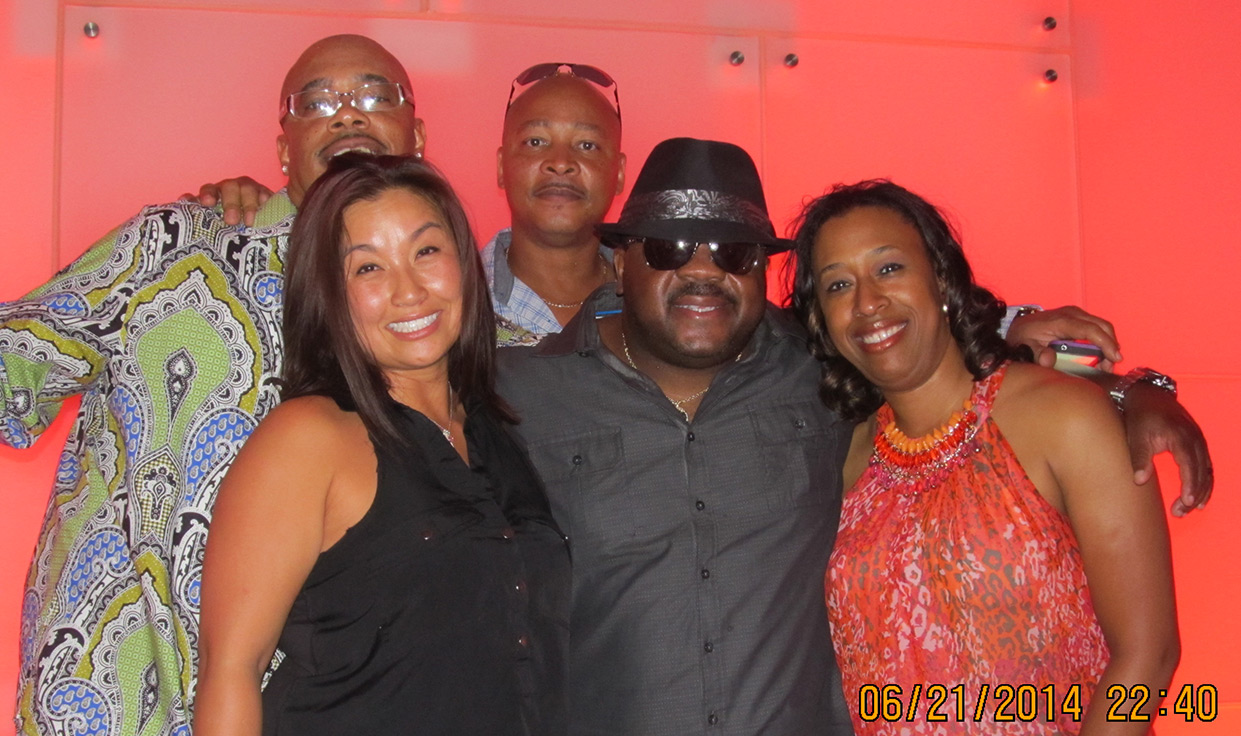 Credit: Jindia Blount
Credit: Jindia BlountThe delay is common for testing alcohol levels in shootings, Fetter told the Tribune, especially in the early morning on a Sunday when it’s hard to find a judge to sign a search warrant. And he said Andres never appeared drunk on the scene and fully cooperated with detectives.
Some departments, like Houston, have policies specifying that an officer can’t carry a firearm while drinking off duty, but rules vary by agency. The Arlington Police Department did not respond to requests for information regarding its alcohol policies.
Andres was placed on paid leave during the investigations but was ultimately cleared of wrongdoing by his department and a Dallas County grand jury. He has since been promoted to a lieutenant with the department and serves as a shift commander for patrol, according to Arlington police spokesman Lt. Christopher Cook. When the Tribune asked to speak with Andres, Cook said he hadn’t been authorized to speak on the shooting.
Jindia Blount still believes the shooting was unjustified. She filed a civil wrongful death suit in June, two years after her brother’s death. Andres and the city of Arlington have filed motions to dismiss the case.
Sitting on her brother’s white, leather couch with tears in her eyes, she said she often relives May’s death. It’s the night she lost the big brother she admired and spoke with every day.
“I can still look and see his facial expression, and I can still smell his cologne,” Blount said, her voice shaking. “It’s like a DVD that’s on auto-repeat, and it replays in my mind.”
Feedback or tips? Send an email to unholstered@texastribune.org. To republish this story, view our guidelines and the plain text of this story.
